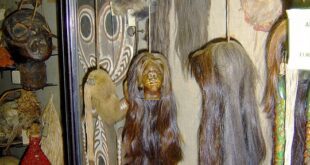The Top 10 Mind-Blowing Discoveries of Human Evolution
Human evolution has been a fascinating topic of research for a long time. Archaeological and genetic findings have enabled us to learn more about humankind’s origins, adaptation and discovery of our ancestors’ simple and complex tools, family and social structures, and how they lived life. Here, we examine some of the most mind-blowing discoveries concerning human evolution.
1. Sahelanthropus Tchadensis
In 2001, Sahelanthropus Tchadensis, an early hominin species from around seven million years ago, was found in the Djurab desert of Chad, Africa. The skull had the chimplike face, a reduced canine tooth, and human-like upright stance of bipedal locomotion indicating a closely related precursor to modern humans. What astounded scientists were the numerous morphological findings that expanded the horizon on our evolution from common ancestors.
2. Ardipithecus Ramidus
In Ethiopia, a palaeoanthropological survey found over 40% of the bone structure from this skeletal hominin species dated close to 4.4 million years, indicating direct links between Lucy’s australopithecan line with the dominant Homo line. Ancient bipedal hominids highly fossilised, including previously unknown tree-climbing and body weight anatomy.
3. Homo Naledi
Homo Naledi has become a sensation recently when found hidden within underground caverns in South Africa. The species’ distinctive finding is their unique blend of homo erectus and hominid practicality, with human skills and tool-making evidence representing early members of Homo sapiens. Necessary from the holistic descriptions shared across the web and social media the visual presentations of deep into cave explorations may pique the young generation’s interest in exploring science fields.
4. Ötzi the Iceman
At over five thousand years old, Ötzi the Iceman was discovered in the Eastern Alps’ mud frozen inside glaciers. What made the discovery lound and well known was it was around that dates before the start of the Bronze Age, Ötzi’s preservation of physically healthy, clothing traces chemical traces on tools , and landscape patterns allowed researchers to really peek into life diadrams at the time.
5. Homo Sapien and Neandertals
Analysis of ancient hominid teeth and genetics show a close genetic linkage between modern humans and the distinctively ancient widespread hominid Neanderthals. Dating shows the “war-periods” of timing around 285,000 to 40,000 years ago brought on significant changes in population structures foreshadowing tribes and broader evolving genoypes.
6. Lucy
Lucy’ was known for remaining the oldest fundamentally complete australopithecine fossil, bone fragments accounted for over half bones recovered dating back 3.2 million years. Scientists could see how primates transformed from apelike creatures to true bipedal creatures such as way Lucy allowed her skull bones, accentuated her backbones from multiple sample spikes in spine quotients etc.
7. The Hobbit
Found on the island of Flores in 2004, researchers immediately knew Homo Florensiensis, colloquially known as “The Hobbit”, was not only different but related divergently from Homo Erectus. Even the species name suits the small size of their jaw, small vessels indicative contemporaneous evolution on the vast Asian continent foiling many initial claims of human exogenous evolution lasting 12,000 years after creation.
8. Homo Erectus Straight-Legged Stance
Previously Homo inhabiting Java from 1.2 million years ago, discovered by Eugène Dubois, but analyses-driven traits of “Turkana Boy” such as the straight-legged stanced body knowledge on evolution honed specific physical variation generating conscious body form which conveyed not just more functional knowledge but whole improvement allowing the lineage to merge forwards.
9. Wallace and Darwin tie
In Darwin and Wallace’s evolution of evolutionary knowledge on The Island of Tanredwego, short bridges drove the discovery of physical markers and archaeological tracing highlighting the frequency of adaptation genetic lineage prominence distinct evolutionary mileposts concentrating towards antropen evolution.
10. Human Migration Evidence
The past can be illuminating of the present, and the ancient past was unearthed too from genetic and oral-history discoveries highlighting over early human adaptation and their disruption under intense political, social, and cultural affiliations pushing various Homo sapiens to new continents through sub-Saharan Africa, Middle East land bridges all set the path for intensive unearthing of society-specific ancient allegiances in further untapped locations aiding human immigration perception for centuries to come.
 Mind Uncharted Explore. Discover. Learn.
Mind Uncharted Explore. Discover. Learn.

